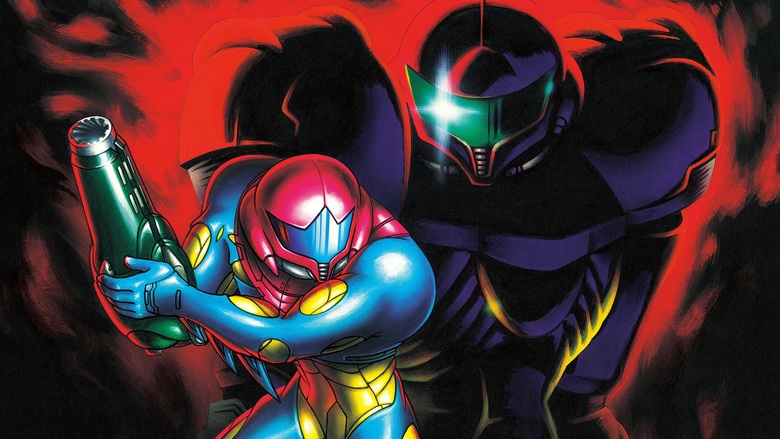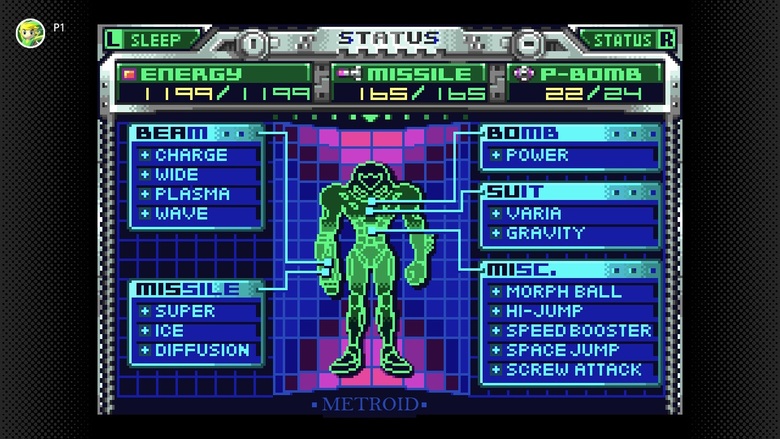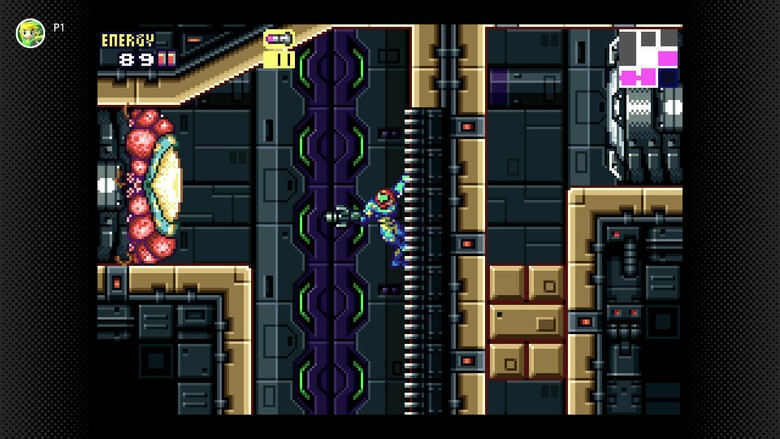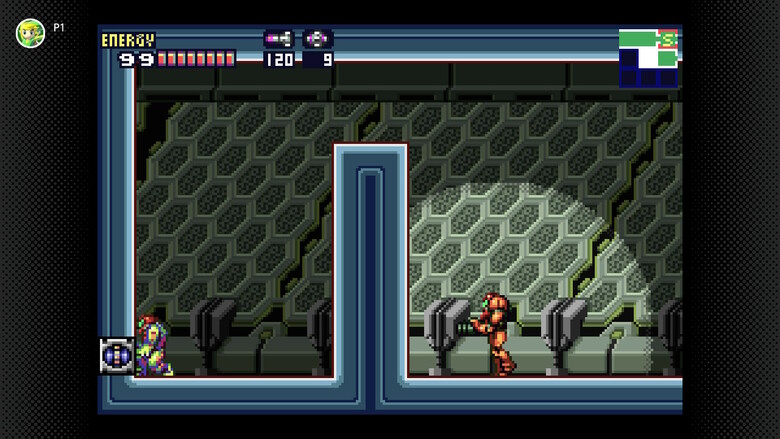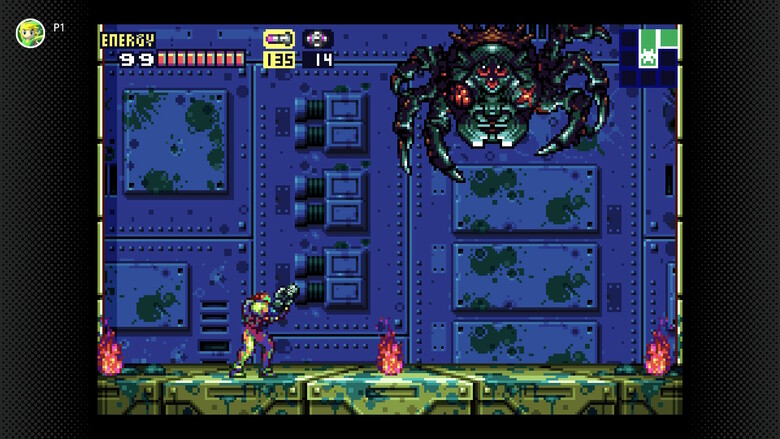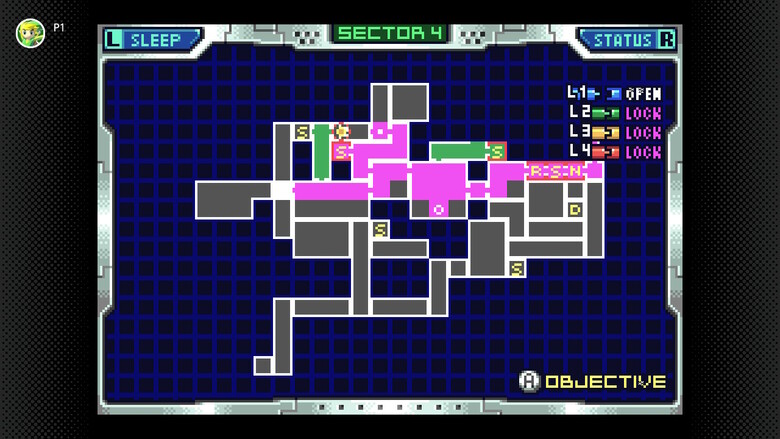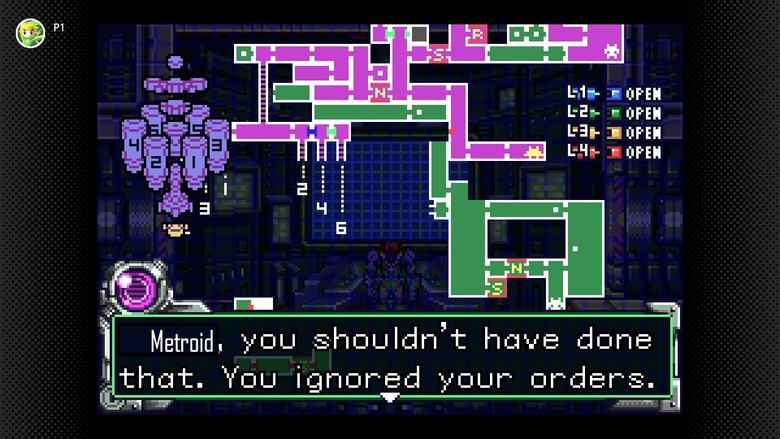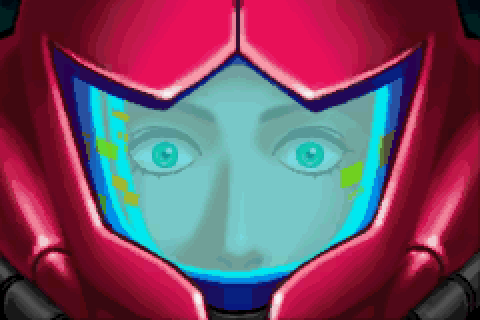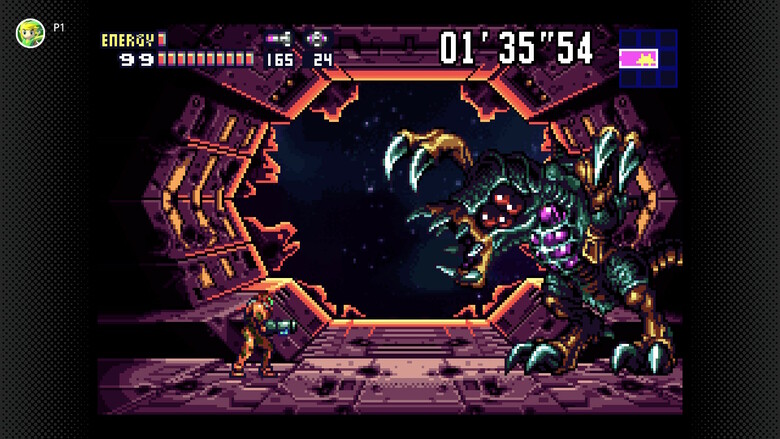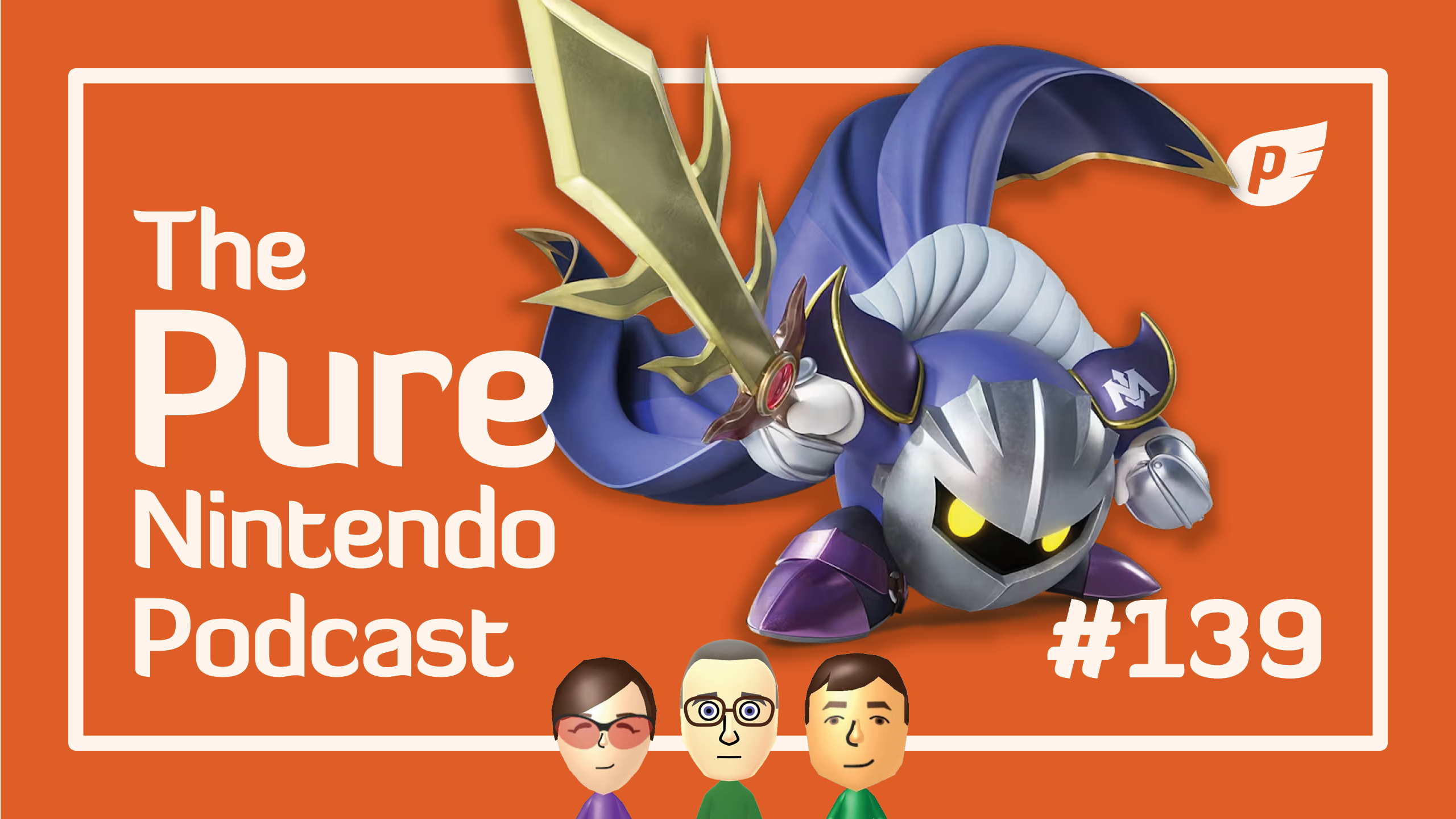Metroid Fusion morphs Metroid into something subtly different. Unlike the X Parasites, it doesn’t give the series cold, dead eyes so much as it drags the series out of its comfort zone. What makes a Metroid game “Metroid,” has almost been codified, like they are all the same game and need to follow all of the same rules. Fusion demonstrates the malleability of the Metroid formula better than perhaps any other entry. It takes many of what people consider to be Metroid’s greatest strengths, what makes a Metroid “normal,” and twists them into something sinister.
From the moment the game begins, Fusion assaults your expectations. I don’t just mean that for existing Metroid fans, either. It worked on me as a child, and Fusion was the first Metroid game I had ever played. Metroid was of course my favorite character in Super Smash Bros., so I was at least familiar with him there.
Fusion’s opening shocked me by depicting what is essentially a near-death experience for the protagonist. Metroid’s initial encounter with the X Parasites dramatically alters him both inside and out. He unwillingly discards his iconic orange Super Smash Bros. suit for a much wilder blue and yellow palette. He loses his abilities. He gains weaknesses he didn’t have before. The Metroid you thought you knew, however briefly you knew him, is no more.
By immediately throwing you into such a dramatic situation, Fusion knocks the player off-balance. It sets the expectation that Metroid is out of his element and things aren’t the same this time around. The enemies in this game are powerful and Metroid is weak. Sure, this event ultimately boils down to a narrative device that justifies resetting the character so that you can build him back up over the course of the game, but it’s an impactful one. It not only messes with Metroid himself, it messes with your perception of the game.
Don’t worry, I’m also just messing with you. I know Metroid is a girl.
The story-heavy opening sequence eases you into a key aspect of Fusion: it guides the player a lot more than prior Metroid games. Narratively, it does this with the consistent presence of Navigation Rooms that force you to check in with an AI that bosses you around. The stereotypical Metroid experience, the one people so often conjure up in their mind, is one of isolated exploration. No one tells Metroid what to do, she uncovers the path forward herself. The AI removes that agency, subtly transforming the experience. You may still be running around an area with multiple different routes, but the way you perceive it differs from uncovering the map and discovering what you need to do on your own .
Fusion’s emphasis on guidance has often been construed as a weakness – after all, we know what Metroid is “supposed” to be, and Fusion goes in the opposite direction. On a design level, the developers have confirmed that a major goal of Fusion was to make it easier to play than prior games. That goal translated to a more linear, story-driven focus for the game. You may think that with such a goal that Fusion sacrifices some of the game’s edge and ends up being an overall more friendly game than its predecessors.
What the developers don’t explicitly mention is that they leveraged Fusion’s compromise in game design to the game’s advantage. At face value, Fusion looks, feels, and plays like Metroid – everything is just ever so slightly off. The game pushes this feeling to the forefront by waving the idea of how things are supposed to be directly in your face throughout the game. In a variety of ways, Fusion turns “normal” into your enemy.
The X Parasites represent the most obvious example. The X are inherently dangerous enemies meant to play with your expectations. They often look like familiar Metroid enemies, but they don’t act like normal enemies from any game really, let alone Metroid. In a normal game, you blast an enemy and call it a day. With an X Parasite, you never know for sure if that’s going to happen. It may stay dead. It may revive. It may duplicate. It might even transform into something else entirely. The lack of consistency keeps you consistently on your toes. How the X will inconvenience you next remains a constant threat. This is a game where even the doors will give you a hard time.
If the normal enemies don’t stress you out, the presence of the SA-X will. Although the SA-X only shows up a handful of times, it always makes an impression. Every time it appears, you suddenly find yourself in a very different game. The pace grinds to a sudden halt and the music becomes foreboding. Most encounters leave you no choice but to run past the SA-X in a desperate run through an area you’re unfamiliar with, which forces you to think on your feet or be annihilated in seconds. These sections mark Fusion’s most dramatic departure from the Metroid norm, turning you from the bounty hunter to the hunted.
How dramatic that departure may be is also a matter of (literal) perspective. The SA-X reflects Metroid in both her abilities and her old appearance. This creature is, more or less, your character as she should be. It has all of your old abilities, which in gameplay terms means it can kill you in seconds. On a narrative level, however, it also creates an interesting comparison point. Throughout the game, the SA-X will blow through walls and doors, creating new paths or blocking old ones. These acts, along with some narration from the AI, give the impression that the SA-X possesses a level of freedom that you don’t.
In another version of this game where Metroid didn’t lose her powers, you could be the SA-X. In fact, in any other Metroid game, you’d be the one blasting through unexpected paths and obliterating anything in your path. By turning the tables on you, Fusion flaunts what a “normal” Metroid game would have looked like. By specifically crafting the SA-X as the one you’re trading places with, it turns “normal” into your greatest foe.
Both the lesser enemies and the SA-X slant the game towards a more action-heavy focus than prior titles. They emphasize combat and quick decision-making in ways the more slower-paced exploration titles do not. With Fusion’s exploration dulled by the guidance the game provides, it follows that something should pick up the slack. Nothing demonstrates this new action-based philosophy better than the boss fights.
Up until Fusion I would describe Metroid boss fights as intentionally messy. Enemies might have a quirk for hitting them and attacks that skilled players can avoid, but most boil down to spamming your arsenal into their weak spot until they die. If you diligently collect health expansions, you don’t need to worry that much about actually learning their attack patterns. Metroid bosses are battles of attrition that you can overcome through carefully exploring the game over skillful play. That balance serves games all about exploration well.
Now that the wind has shifted towards action, Fusion bosses prefer to challenge your skill more directly. Most battles involve timing your shots in line with a boss’s small windows of vulnerability. Weak spots often reside in awkward, hard to hit spots. Your opponents hit hard, so dodging their attacks is a must in order to survive between the windows where the boss is vulnerable. You need to actually learn these fights. Exploration will mitigate some of the challenge, but it is no longer the out it historically has been.
Although Fusion takes the series into a different direction, it does not abandon its roots entirely. The developers noted that they still wanted to maintain “Metroid-ness” despite the simplified role of exploration. A degree of “Metroid-ness” does in fact exist in Fusion’s exploration. Just like everything else, however, it exists in a way that turns the norms of Metroid, and perhaps logic itself, against you.
Fusion’s exploration feels like Metroid in the moment while overall keeping you much more focused. The game’s space station splits itself into six main areas. Each area maintains a distinct theme and atmosphere, but they are relatively small in scope. Even when you can see multiple paths, they are often locked behind security doors that further limit your search area. Fusion often falls into stretches where it feels like a stage-based action game in the vein of something like Mega Man (your character is blue in this one, so I have to bring him up). Even with the more straightforward level design, however, it’s still possible to get lost or frustrated about how to progress.
In fact, the level design almost taunts you. A seemingly innocuous room where you drop between two walls placed just high enough for you to be unable to climb up will likely be the first room to trap most players. You have no choice but to haphazardly place bombs all around the tiny enclosed space, which will spawn a pillar that lets you escape. This room teaches you the importance of trying such a tactic, but it’s also a little cruel. Even Metroid veterans will likely expect to have to bomb the walls, not some random part of the floor. Despite being a “normal” Metroid strategy, the game executes it in a way that hints at its mocking approach to exploration.
A similar philosophy carries across the map design as a whole. Even when the AI shows you where to go, you will quickly discover that this isn’t all of the information you need to reach your objective. Fusion often provides multiple paths that look like they will bring you right to the objective, only for you to arrive and find your way blocked by something the map didn’t tell you about. This results in you needing to try multiple paths, with the true path often being one that was hidden from the start.
On paper, this map design is normal Metroid stuff. By specifically pointing you to where you’re supposed to go, however, Fusion strings you along only to smack you down.
In ways both big and small, Fusion warps the idea of normalcy into its primary antagonist. In place of an open-ended exploration game lies a guided, more action-heavy one. This change fits both the narrative and design of the game. Fusion is ultimately a game about fighting against a twisted version of Metroid’s norms and reclaiming them for yourself.
The endgame of Fusion’s story makes this clear. As you progress, Metroid slowly begins to defy her AI companion’s expectations and orders. It may not be totally intentional, but she collects power ups that she wasn’t meant to and discovers places that she shouldn’t. These detours unveil the truth about what’s been going on in the space station that the game takes place in. In a meta sense, you are technically still following the path the narrative lays out for you, but they at least give the impression that Metroid is slowly regaining her freedom.
Metroid’s quest to uncover the truth culminates in a final heart-to-heart with the AI. Following their conversation, the “off” feeling that has pervaded the entire game suddenly dissipates. You’re no longer Metroid, you’re Samus Aran.
Although the AI gives you a rather urgent final “mission,” it’s up to you whether or not you do it. From this point onward, the entire space station opens up for you to explore. Since you have virtually all of your abilities, you’re free to trek through the entire game and collect whatever items you missed. It’s in this moment, with ever present triumphant music blaring, that Fusion finally feels like a “normal” Metroid. The freedom that the narrative hinted at is finally within your grasp.
Whenever you decide to finish up the story, everything else falls into place like a formality. You finally encounter and defeat the SA-X on a level playing field. You gain your final upgrade, an orange suit that allows you to fire the ice beam, the one upgrade you were told near the start would be impossible for Samus to use. I don’t believe for a second that it’s a coincidence that Samus’s appearance here changes to resemble her iconic design, and her final challenge is to effortlessly dispose of a monster she’s defeated before. Fusion says loud and clear with its finale that Samus and the Metroid you know have returned. Normalcy is yours once again.
Metroid Fusion marks Metroid’s first steps towards a more action-heavy, story-focused direction. While it wouldn’t be the last Metroid to do so, I do think it’s the strongest execution of the concept. Metroid Fusion takes the familiar and uses it as a stepping stone towards a new direction. It evokes just enough “Metroid-ness” to feel like it belongs in the series while doing something new with it. Fusion may not offer everything that a Metroid is “supposed” to, but it does offer an engaging twist on its conventions.

